The Vanderbilt University Medical Center Department of Anesthesiology carries the distinction of being one of the first independent departments of anesthesiology in the United States, having been established on December 12, 1945. After observing that the battlefield-wounded of World War II were more likely to survive if they received immediate, skilled anesthesia care, Vanderbilt physicians advocated that anesthesiology be established as an autonomous department. At that time, few medical schools possessed an academic anesthesiology service of any type.
Select the timeline links in the navigation bar to the left to read more about our department's history and our founding fathers, including our chairmen.
-
The establishment of the Vanderbilt Department of Anesthesiology at Vanderbilt is largely credited to Dr. Barney Brooks. Dr. Brooks was appointed Professor and Chairman of the Department of Surgery at Vanderbilt in 1925 along with other new faculty who were chosen to reopen the revised and rejuvenated Vanderbilt Medical School in 1925. Brooks had graduated from and interned with Johns Hopkins University School of Medicine in 1907, but he took his surgical training at Barnes Hospital and Washington University in St. Louis.
By 1925, Brooks already had a national reputation for research and clinical practice of surgery. His biography and conversations with the few remaining physicians who knew him indicate that he was a quiet, forceful and inspiring man. He always had an interest in advancing surgical science and inspired a large number of investigations by Vanderbilt collaborators, many of whom, such as Alfred Blacock, Tinsley R. Harrison, and Sidney Burwell, became world famous. The group’s investigations included physiologic and pharmacologic studies of general anesthetic agents (but without the apparent collaboration of any physicians trained in anesthesia). (Ref: Scott-Rosenfeld).
Early in World War II it became apparent that America needed physician anesthesiologists. It was learned that a large proportion of the battle deaths at Pearl Harbor might have been avoided by better application of already well-known anesthesiology principles. At this time, the American Board of Anesthesiology was a subsection of the American Board of Surgery and did not become autonomous until 1942 after the start of the war. In fact, in 1942 there were only 100 holders of the certification “D.A.B.A” (Diplomate of the American Board of Anesthesiology).
Fewer than 50 physicians with any formal anesthesiology training entered the Armed Services (Ref. Green 1975). Therefore the War Department established a system of “Consultants in Anesthesiology” which included many now famous anesthesiology professors. These men established an emergency anesthesiology training program which quickly provided the first trained (hastily) anesthesiologists that many surgeons had ever seen. Several publications and many letters to home extolled the virtues of this new specialty and, at the end of the war, many of these young surgeons wanted physician anesthesia in their civilian practices (Collins).
At the end of World War II, the number of anesthesiology physicians in the United States rocketed from 500 before the war to 2,000 at the end of hostilities (Green). Vanderbilt University Medical Center had sent a large contingent of surgeons, nurses and physicians to the war, who were essentially allowed to stay together as the “Vanderbilt Unit.” They saw action in the European Theatre. These friends and residents of Dr. Brooks were highly impressed with the improved survivability when anesthesia physicians were involved. These views were communicated to Barney Brooks.
Even before the end of the war, Dr. Brooks began a campaign to obtain physician anesthesia at Vanderbilt University. Some of the original correspondence still exists and shows that it was not easy for him to convince colleagues that anesthesiology had a place at Vanderbilt. It is a tribute to his vision and perseverance that on December 12, 1945, the Executive Committee of Vanderbilt University School of Medicine and Dean Goodpasture created the new, independent and autonomous Department of Anesthesiology. At that time very few medical schools possessed an academic Anesthesiology Service of any type and even in those schools, Anesthesiology was usually designated as a subdivision within the Department of Surgery.
-
On January 1, 1946, the autonomous and independent Department of Anesthesiology at Vanderbilt University was established under the chairmanship of Benjamin Howard Robbins, M.D. (Ref: Minute of the Executive Faculty-Vanderbilt University School of Medicine—December 15, 1945). New research indicates that we were probably the third autonomous Department of Anesthesiology within a medical school in the United States (research is still incomplete).
It should be noted that, even though Dr. Robbins held the MD degree, by late 1945 he had spent very little time with human patients. Therefore, while the Department of Anesthesiology at Vanderbilt was established on January 1, 1946, he quietly spent the first six months of that year at Mayo Clinic in Rochester, Minnesota learning human anesthesia as a “Fellow in Anesthesiology” under the direction of the great Dr. John Lundy.
Lawrence G. Schull, Sr., MD, began his formal residency in anesthesiology on January 1, 1946, and later admitted that there was no one to teach him, so he taught himself. Dr. Robbins returned from Mayo and he and “his resident”, “Larry” Schull possessed about the same amount of clinical experience in administrating anesthesiology to humans! Despite Robbins’ brief training, he was granted full Diplomate status by the American Board of Anesthesiologists in 1952, probably partly in recognition of his outstanding academic qualifications.
Tragically, Robbins experienced a massive heart attack while administrating anesthesia in Vanderbilt Hospital on December 15, 1960, and passed away less than 24 hours later. In addition to the many accomplishments noted in his attached biography, Dr. Robbins had expanded the faculty from one in 1946 to six at his death. He trained twenty-seven resident physicians in anesthesiology of whom two eventually became full professors at other universities and one a full professor at Vanderbilt. Approximately one-half of these graduates became founding members of physician anesthesiology departments in non-university hospitals all over middle Tennessee, Chattanooga, and Knoxville.
On January 1, 1961, Dr. Robbins’ loyal and respected first resident, Lawrence G. Schull, Sr., MD, was appointed Acting Chairman of the Department of Anesthesiology and remained in this post until June 31, 1962.
-
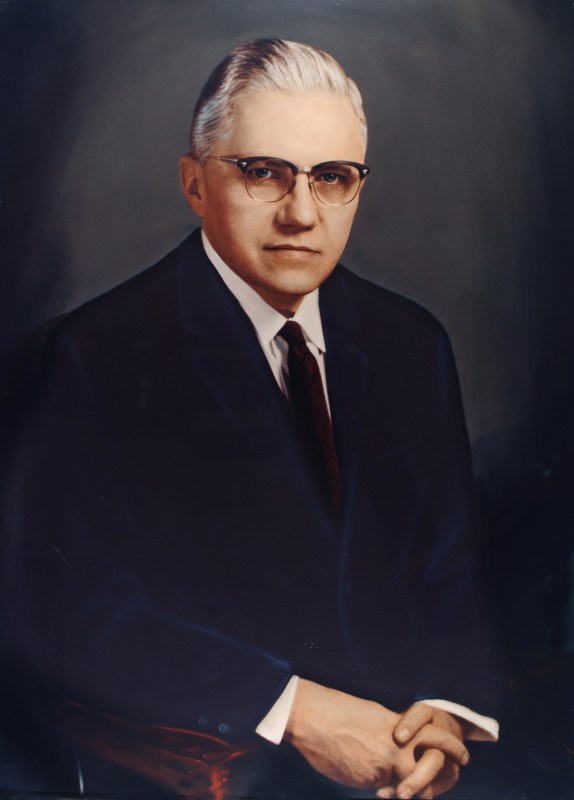
Charles Bernard Pittinger, MD, was chosen by Vanderbilt to become Chairman of the Department of Anesthesiology beginning July 1, 1962
During Dr. Pittinger’s tenure as chairman of the department, eighteen residents were trained in anesthesiology and the faculty was expanded from five to seven full time members. In addition, resident anesthesiologists were routinely trained at the Veterans’ Administration Hospital under Basil M. Mixon, Jr., MD. Ildefonso A. Alcantara, MD. was added to the teaching faculty of the university although stationed at Nashville General Hospital.
Professor Pittinger stepped down from the chairmanship of the department on July 1, 1968, and Yilmaz Eryasa, MD, Associate Professor of Anesthesiology, became acting chairman of the department from July 1, 1968 through June 30, 1969.
-
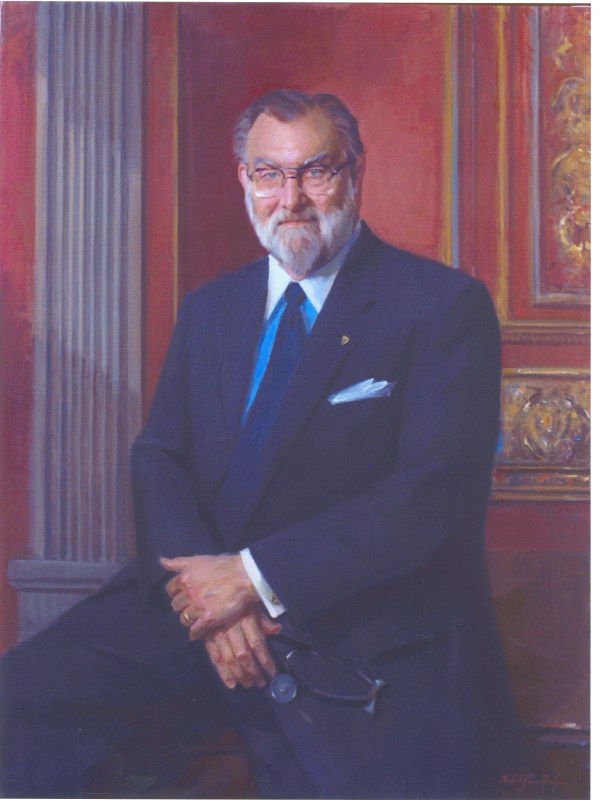
Bradley Edgerton Smith, MD, became Chairman of the department effective July 1, 1969. Dr. Smith was chairman of the committee which wrote the governance document for the first organization of private medical practice at Vanderbilt (the Vanderbilt Professional Practice Program), and he was chairman of the committee which instituted the first Cardio-Pulmonary Resuscitation program at Vanderbilt Hospital. He established the first position for a full time “intensivist” at Vanderbilt, and in 1985, he established Vanderbilt’s first Pain Control Clinic (under Winston C.V. Parris, MB.B.Sc., D.Sc., who later was elected President of the World Society of Pain Physicians).
As Director of the Vanderbilt Hospital Department of Respiratory Care from 1969 until 1984, Dr. Smith presided over the increase of Respiratory Care staffing from sixteen in 1969 to 67 staff, and Respiratory Care annual billings from $360,000 to $6,000,000.
During Dr. Smith’s chairmanship the Vanderbilt Anesthesiology Department published over 536 scientific and clinical reports in the medical literature. The faculty was expanded from seven full time members in 1969 to 42 in 1993. The resident staff grew from 12 to 58, and the support staff from three to 171 by 1993.
The total Department of Anesthesiology non-clinical space grew from only 900 square feet in 1969 (not including laboratories) to 15,428 in 1993, of which 5,230 square feet were well-equipped laboratories. Annual research expenditures grew from $20,000 in 1969-70 to $845,000 in 1992-93.
During Dr. Smith’s tenure 236 physicians were trained to become anesthesiologists, and 85% of these obtained certification by the American Board of Anesthesiologists. Five who were Residents or Fellows became full Professors of Anesthesiology at Vanderbilt or elsewhere; Margaret Wood, MB.BS, a former Fellow and long-serving faculty member, became Chair of the Department of Anesthesiology at Columbia University; Dennis Higdon, MD, rose to the rank of Major General in the Air Force Medical Department; and yet another, Winston Clive Victor Parris, MB.BS., D.MSc., was elected President of the World Society of Pain Physicians.
On March 1, 1993, Dr. Smith’s term as Chairman ended, and he was succeeded by John Julian Franks, MD, already Professor of Anesthesiology in the department, who served as Interim Chairman until the arrival of the next named chairman, Dr. Charles Beattie.
In 2008, Dr. Smith concluded his clinical practice and became professor-emeritus of the Vanderbilt Department of Anesthesiology where he continues to pursue academic and professional interests of importance to the department and the specialty. Dr. Smith’s remarkable career as a physician and leader was honored by the Department of Anesthesiology in 2010 by the establishment of a formal lectureship on medical professionalism.
-
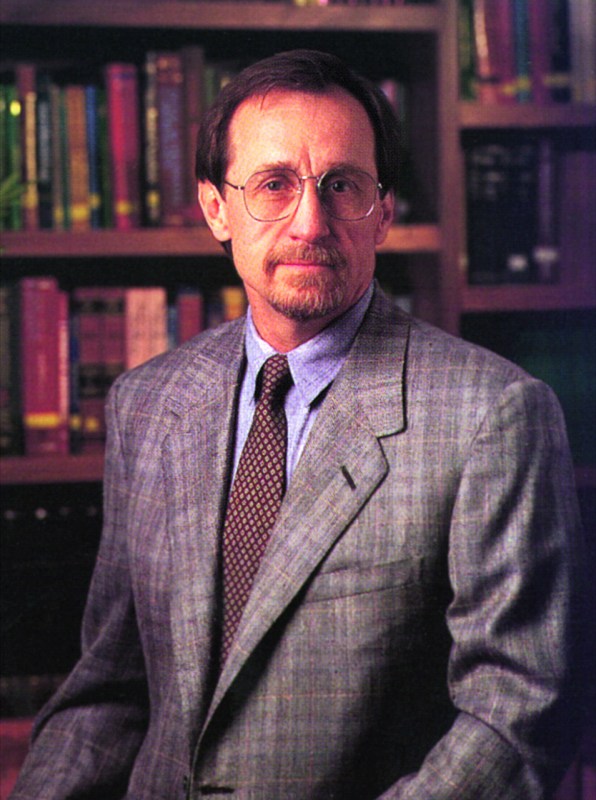
Charles Beattie, PhD, MD, was named Chair of the Department of Anesthesiology on April 15, 1994, and he led the department until September 1, 2001.
Dr. Beattie was born in Louisville, Kentucky. He attended the University of Louisville JB Speed Scientific School from which he received his Bachelor and Master of Chemical Engineering. During his Master's work, he became interested in the new field of nuclear engineering. In 1963, he was one of a small group of graduate students in the U.S. to receive the Atomic Energy Commission Special Fellowship in Nuclear Science and Engineering. His work in the New York University Department of Nuclear Engineering led to the PhD in Reactor Physics in 1971. At the time of graduation, he experienced a serendipitous discovery of Wilder Penfield’s classic text, “Speech and Brain Mechanisms.” The prospect of working in a profession that deals with understanding the brain was so compelling that Dr. Beattie decided to change careers and enter medical school. During medical studies at the University of Kentucky, he was attracted to anesthesiology by Mark Ravin, MD, and Robert Donham, PhD, M.D., the latter serving as his mentor through residency. Dr. Beattie was recruited to the Johns Hopkins Hospital in Baltimore by Mark C. Rogers, MD. For 13 years, he directed the division of Critical Care Anesthesia which provided anesthesia services for critically ill patients who were undergoing vascular, thoracic, liver transplant and major abdominal surgery.
Dr. Beattie’s academic interests focused in the area of clinical research. He observed that published clinical trials comparing anesthesia techniques produced conflicting and uninterpretable results because of failure to create and implement protocols and to appropriately manage their control groups. To address this issue, Dr. Beattie and his group (including Rose Christopherson, PhD, M.D. and Steven Frank, M.D.) applied for and received NIH funding for the “Perioperative Ischemia Randomized Anesthesia Trial.” The results of this study led to many publications, several accompanied by editorials lauding the design. Dr. Beattie and his group (including Edward Norris, M.D. and Peter Rock, M.D.) were awarded a second NIH grant to address “Methods of Anesthesia and Analgesia in Aortic Surgery,” which successfully blinded anesthesia, intensive care and pain management teams to the type of anesthesia and analgesia used in each group.
While at Hopkins, Dr. Beattie progressively assumed administrative responsibilities, first as associate and then as Clinical Director. Upon the departure of Dr. Rogers in 1992, Dr. Beattie was named Interim Chairman. He was interested in physician impairment, serving on the Physician Rehabilitation Committee of Maryland. In association with Richard Kilburg, PhD, he guided development of the still-active faculty and staff assistance program at Hopkins. Dr. Beattie was an active and highly-rated teacher who twice won the “Best Teacher” award. His clinical skills were recognized in 1991 when he was among a small number of anesthesiologists listed by Baltimore Magazine as “Best Specialists” in the area.
Interested in difficult airway management for many years, Dr. Beattie was among the first group of clinicians to employ fiberoptic bronchoscopes to assist endotracheal intubations. He was founding vice president of the American Society of Airway Management and was invited to present the first annual Ovassapian Lecture of the Society. In 1995, he received the Distinguished Alumni Award from the University of Kentucky Anesthesiology Department.
Dr. Beattie came to Vanderbilt as Professor and Chairman of Anesthesiology in 1994, a time of complex issues both locally and nationally. He found opportunities to fully engage his interests in Resident Education, Research, Administration, and Clinical Care. With enthusiastic participation by selected existing faculty and serious recruiting successes (including Jeffery Balser, MD, PhD), the department evolved to national stature, ranking twelfth in NIH funding. The residency program became competitive for the most qualified candidates. Clinical care was subspecialized. Dr. Beattie is a proponent of anesthesiology as the practice of perioperative medicine. This model was developed and practiced at Vanderbilt in association with certain surgical services. Dr. Beattie promoted and sponsored the creation of a perioperative information management system at Vanderbilt. The system was designed to facilitate clinical care, documentation, research, teaching and billings and collections. The system has since won national awards.
Dr. Beattie served the NIH as special study-section reviewer, expert panelist, and perioperative medicine advisory committee member and was the site principal investigator for the mutli-institutional NIH sponsored clinical trial “Elder Surgery: Functional Recovery following Beta Blockade.” (P.I.-Jeffery Silverstein, MD) Dr. Beattie authored or co-authored more than 150 publications. He was chosen to write the chapter, “History and Principles of Anesthesia,” in Goodman and Gilman’s, 10th edition of the Pharmacologic Basis of Therapeutics, 2001.
-
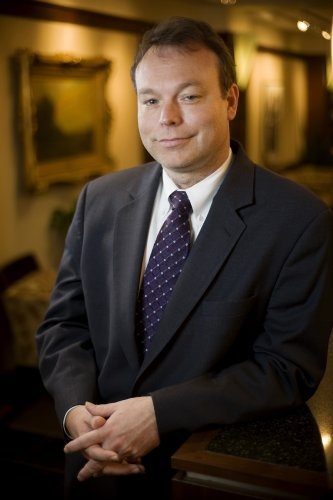
On September 1, 2001, Jeffrey R. Balser, M.D., Ph.D., already professor of anesthesiology in the department, became chairman after Dr. Charles Beattie’s departure. He served as chairman until July 15, 2004.
Dr. Balser, a 1990 graduate of the Vanderbilt MD/PhD program in pharmacology, undertook residency training in anesthesiology and fellowship training in critical care medicine at Johns Hopkins. He joined the faculty at Johns Hopkins in 1995, initiating a basic research program aimed at the molecular pharmacology of cardiac arrhythmias. His clinical work has primarily involved the care of postoperative cardiac surgery patients in ICU settings. Dr. Balser moved to Vanderbilt in 1998, and served as Associate Dean for Physician Scientists. He established an intramural mentoring program for junior faculty physician scientists that has been a national model for centralized management of physician scientist career development and is supported by the NIH. His research program has been aimed at the pharmacogenomics of cardiac arrhythmias. His studies in Nature, PNAS, and Nature Structural and Molecular Biology have established new paradigms for cardiac excitation-contraction coupling and are yielding new targets for arrhythmia control.
In 2001, Dr. Balser was appointed the James Tayloe Gwathmey Professor and Chair of Anesthesiology and was elected to the American Society for Clinical Investigation. Under his leadership, Vanderbilt anesthesiology scientific programs diversified to include NIH-funded programs in health services research and perioperative genomics, and the department advanced into the top 10 in NIH funding.
Under his leadership as chairman, Vanderbilt anesthesiology clinical, educational, and scientific programs diversified and expanded, becoming a premier department nationally. In 2004 he became Associate Vice Chancellor for Research for the Vanderbilt Medical Center, overseeing in enterprise-wide strategy, infrastructure, and investments in research during an expansion period where Vanderbilt moved into the top 10 in NIH funding. In October 2008, he was named Associate Vice Chancellor for Health Affairs and Dean of the Vanderbilt School of Medicine. He has chaired the NIH Director's Pioneer Awards, is a member of American Society of Clinical Investigation and the Association of American Physicians, and in 2010 he was elected to the Institute of Medicine of the National Academy of Sciences. Comprised of top health experts and life scientists, the IOM is a national adviser to improve health and promote health-related research.
-
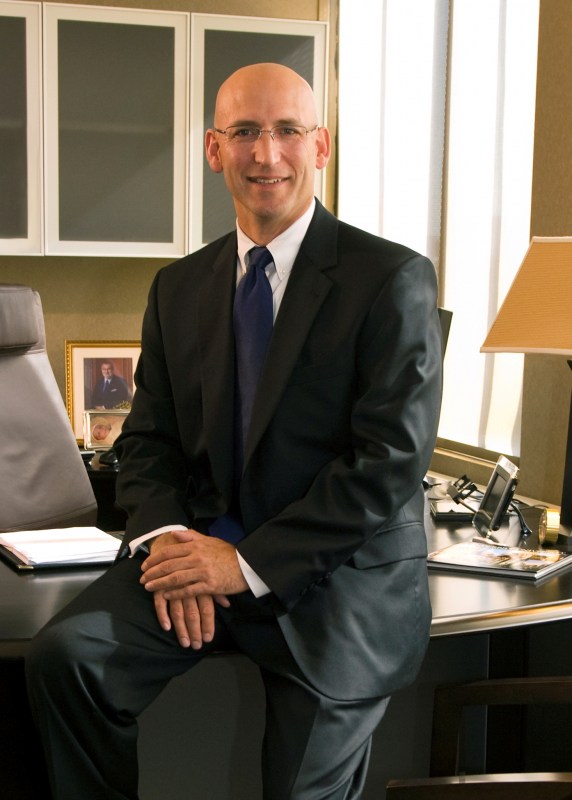
Michael S. Higgins, MD, M.P.H., already a Vanderbilt faculty member, was appointed to serve as Interim Chair on July 15, 2004, upon Dr. Jeff Balser’s promotion to Associate Vice-Chancellor and was selected as Chair in March of 2005. Higgins had been an Anesthesiology Department faculty member since October 1994. He served as the Director of the Division of Multi-specialty Anesthesia and as Vice-Chair from 2002-2004.
Dr. Higgins' academic interest is in improving the safety and efficiency of patient care through the application of information technology. Dr. Higgins returned to full-time clinical service with the department, as well as his pursuit of perioperative informatics improvements in April 2010.
-
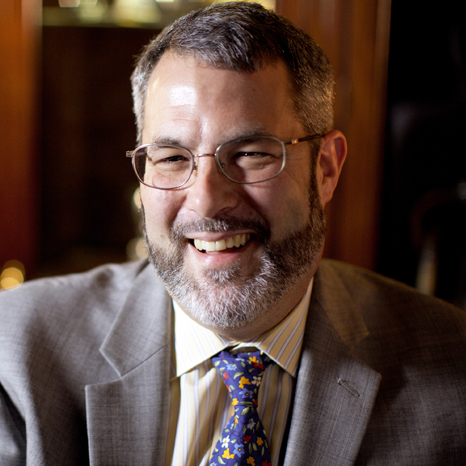
Dr. Warren Ston Sandberg, former associate professor of anesthesia at Harvard Medical School, became chair of the Department of Anesthesiology at VUMC on April 1, 2010.
At Vanderbilt, Dr. Sandberg is Professor of Anesthesiology, Surgery, and Biomedical Informatics. He also serves as Chief of Staff for Perioperative and Critical Care Services for the Vanderbilt University Medical Center.
Dr. Sandberg received his Ph.D. in biochemistry and molecular biology and his M.D. from the University of Chicago, Pritzker School of Medicine. He served his internship at the University of Chicago Hospitals and was a resident/fellow in the Department of Anesthesia/ Critical Care at Massachusetts General Hospital. Dr. Sandberg joined the Harvard University Anesthesiology faculty in 1998. Dr. Sandberg has led the Department of Anesthesiology at Vanderbilt since 2010, and added Chief of Staff responsibilities in 2018.
Dr. Sandberg’s research career began in structural biology and mechanisms of anesthesia. He has broad research interests in medical technology, informatics, patient safety and OR and procedure suite operations, with a strong track record of translating new knowledge into broad implementation to improve efficiency and patient care. A particular focus is using medical information systems for process monitoring, decision support and process control. He has conducted basic, clinical and operations research in successful teams for the past 25 years. This diverse scientific background along with a track record of project leadership, mentorship and publication ultimately led to the post of Chairman of the Department of Anesthesiology at Vanderbilt University.
At Vanderbilt, Dr. Sandberg divides his time between clinical practice, research and administration. He has a clinical and research interest in the development and use of clinical informatics in anesthesiology, and Vanderbilt is a recognized national leader in informatics, quality and health outcomes research. Dr. Sandberg’s specific research interests include: factors affecting physician-patient communication, patient care technology, perioperative systems design and OR workflow management. In his role as Chair of the Department of Anesthesiology, his goal is to leverage forward thinking technologists and the already-present capabilities of the institution to develop world class anesthesia informatics and real time decision support research programs, and to apply these to precision perioperative medicine.
During Dr. Sandberg’s tenure, the Department of Anesthesiology secured and renewed its first T32 training program, called the Training in Perioperative Science (TiPS) as an extension of the BH Robbins Research Fellowship begun under Dr. Higgins’ guidance. The department now has 1.5 decades of formal experience in educating clinician scientists in perioperative medicine. Dr. Sandberg also led the creation of the Cornelius Vanderbilt Endowed Chair in Anesthesiology, currently held by Dr. Edward Sherwood, and the B. H. Robbins Endowed Directorship in Anesthesiology, currently held by Professor Eric Delpire. These are the first two academic endowments in the Department’s long history, and are meant to ensure future resource stability for anesthesiology research.
The Department’s clinical activities have doubled in the past decade, now approaching 100,000 encounters per year. Dr. Beattie, a past Chair of the Department was influential in shaping Dr. Sandberg’s systems-based approach to health care, and, like Dr. Beattie, Dr. Sandberg has supported and led expansion of Perioperative Medicine Services at Vanderbilt. A formal Perioperative Consult Service was established in 2014 and has rapidly expanded. Working collaboratively with surgeons and nurses, this service develops, implements and studies the impacts of Enhanced Recovery After Surgery protocols for numerous service lines. Under Dr. Sandberg’s sponsorship, this team has demonstrated that integrated perioperative medicine spanning from the preoperative clinic to hospital discharge improves operational and patient health outcomes at lower cost.
The Department of Anesthesiology at Vanderbilt University is an aggressive user of information technology and continuous quality improvement methodologies to advance safety and efficiency in perioperative medicine. Under Dr. Sandberg’s leadership, the Department’s academic faculty have sustained clinical productivity in the 75th percentile of performance benchmarked against private practice anesthesia services. The Department was one of the first academic departments to survey all post-anesthesia patients about their experiences with their anesthesia clinicians, achieving a greater than 50% survey response rate and consistently performing in the top quartile for overall satisfaction benchmarked against all other US practices using the survey. Additionally, the Departments consistently publishes at least 280 peer reviewed manuscripts per year in high-impact peer reviewed literature and ranks in the top 15 US departments in terms of NIH funding. Vanderbilt Anesthesiology faculty contribute to leadership in all facets of US academic anesthesiology.